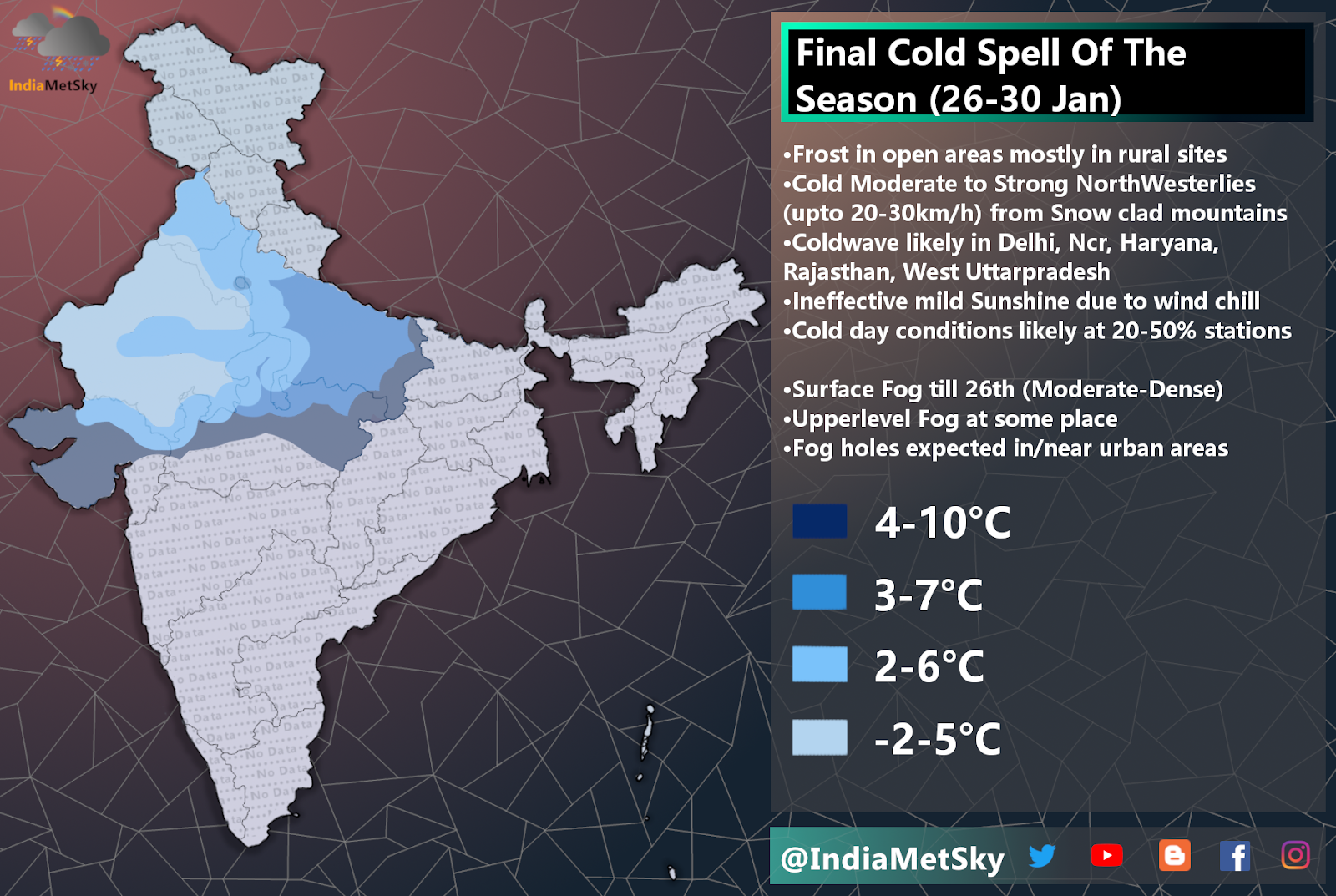Early summer onset over India and South Asia
The weather is dramatic these days. After late and severe Cold wave the winter-spring transition started but it didn’t last long and summers are almost here. February is a winter month but the heat is breaking records. Read how the weather gonna be like and why the heat making a early onset.
Synopsis
•Anti-CC (Cyclonic Circulation)/ High Pressure area over Western India.
•Weak WD exiting the hills
Weather effects
•The Anti-CC is strong and gathering more strength plus long dry phase is adding upto the heat.
•There are few dominant reason behind this above normal temperature and early heat.
1. Strong Anti-CC over western India which is creating a heat dome effect. Anti-CC are a normal part of Indian climate. They form during different and at different places. In normal cases the Anti-CC forms over Western India between late March into late April and they are a part of normal spring-summer transition however in current case the Anti-CC has formed way too early, the system had formed in early February and it is the strongest one yet to form over the southern Asia.
Why do Anti-CC/High Pressure areas do?
•They are the area of sinking air over a large geographical region this led to the formation of high pressure areas. These areas experiences very small pressure gradient and the air does not changes quickly. The air becomes gentle and weak and this leads to stable environments for the heat to build up. When the air sinks, it warms up again. This leads to dry and warm and hot weather.
2. Widespread Rainfall Deficiency
•The winter rains were mostly absent at almost pan India level. The winter and the chill depends on WD frequency and their intensity. This time there were WD at regular intervals but most of them varied from weak to slightly to moderate where as there were only few moderate to active WDs. As the system were mostly weak, their rainfall and snowfall spread was restricted to only middle and upper Himalayas and some lower regions and on few occasions the plains were affected by the systems. A series of WDs affected few parts of central India and North and few areas of Western India at fag end of January but for the most part the country plains remained dry.
•You may ask how the WD and the Snowfall helps in cooling the plains?
-Well, the colder Northernly and NorthWesterly winds flows into the plains from snow laden Himalayas. These winds are generally cold and sometimes very chilled in nature, hence they help in lowers and regulating the temperatures.
•In past 3 weeks the majority of the Indian subcontinent remained dry and the winds are flowing from the deserts. The winds are westerly with slight NW tilt at some times. The winds are flowing from the middle east and the deserts of Rajasthan and Thar Desert, this is making these winds moisture deprived and warm (Effect of Anti-CC)
Now what to expect?
•The Anti-CC is expected weaken around 22-23 Feb due to a weak WD and temperature are expected to fall by few degrees. The heat will be slight weaken but overall the extreme heat will return after 24th feb.




Comments
Post a Comment